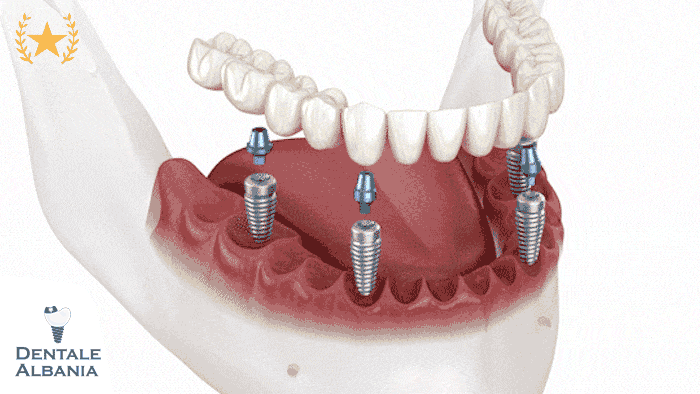Table of Contents
ToggleWhat Are Composite Veneers and How Do They Work?
Composite veneers are a popular cosmetic dental solution designed to enhance the appearance of your teeth using tooth-coloured composite resin. These thin layers of resin veneers are carefully applied and sculpted directly onto the front surface of the teeth, offering a minimally invasive option for patients seeking a whiter, more uniform smile without extensive dental procedures.
Unlike porcelain veneers, which are crafted in a lab and typically require more tooth enamel to be removed, composite tooth veneers are completed chairside in a single appointment. This makes them more affordable, reversible in most cases, and far less time-consuming — earning them the nickname “same-day veneers.”
They’re often chosen to address a range of common aesthetic concerns, including:
- Minor misalignments or crooked teeth
- Small gaps between teeth
- Chipped, cracked, or worn enamel
- Tooth discolouration and staining
The result? A brighter, more confident smile — without undergoing braces or shaving down your natural teeth.
What Is the Composite Veneer Procedure Like?
- The treatment starts with an initial consultation, where your dentist assesses your smile and goals.
- Teeth are cleaned, and the enamel is gently roughened — not shaved — to help the resin bond better.
- Composite material is applied in layers and shaped manually to match your natural tooth contour.
- A curing light hardens the material, and the final result is polished to a lifelike shine.
- Most patients complete this process in just one session, making it highly efficient.
What Is the Difference Between Direct and Indirect Composite Veneers?
- Direct composite veneers are sculpted and bonded directly to your teeth during a single visit.
- Indirect composite veneers are crafted in a dental lab and fitted during a follow-up appointment.
- Direct veneers are more cost-effective and faster, while indirect options may offer a more tailored finish.
How Do Composite Veneers Compare to Porcelain and Other Options?

Composite veneers and porcelain veneers are two of the most popular cosmetic dental solutions for improving smiles. Each has unique strengths and weaknesses, making them suitable for different needs, preferences, and budgets. Understanding how they compare can help you decide if composite veneers are the best option for achieving your desired results.
Are Composite Veneers Better Than Porcelain Veneers?
When comparing composite veneers vs porcelain veneers, several factors come into play:
- Durability and Lifespan: Porcelain veneers are known for their durability and can last between 10 to 20 years with proper care. Composite veneers, on the other hand, typically last around 5 to 7 years, although good oral hygiene can extend this to around 10 years. Porcelain is more resistant to chipping and staining, making it suitable for those looking for a longer-lasting solution.
- Cost and Affordability: Composite veneers are significantly more affordable than porcelain veneers. While porcelain veneers may cost anywhere from £900 to £2,500 per tooth, composite veneers usually range from £200 to £400 per tooth, making composite veneers the budget-friendly choice.
- Procedure and Application Time: The application of composite veneers is quicker, usually completed in one dental appointment through direct application. Porcelain veneers, however, involve multiple dental visits as the veneers are custom-made in a dental lab.
- Aesthetic Appearance: Porcelain veneers offer a slightly superior aesthetic, closely mimicking natural tooth enamel due to their translucent quality. Composite veneers, while still very natural-looking, may not offer the same level of translucency and might look slightly less realistic upon close inspection.
What’s the Difference Between Composite Bonding and Composite Veneers?
It’s easy to confuse composite bonding and composite veneers as both use the same resin material. However, they serve distinct purposes:
- Scope of Treatment: Composite bonding typically addresses minor imperfections such as small chips, cracks, or gaps. It’s a spot treatment that involves applying resin only to affected areas. Composite veneers, by contrast, cover the entire front surface of the tooth, providing a comprehensive cosmetic transformation.
- Longevity and Durability: Composite veneers generally last longer (around 5–7 years) compared to composite bonding (usually 3–5 years). However, both require similar maintenance and care routines to maximize their lifespan.
- Cost Differences: Composite bonding tends to be cheaper, starting around £200 per tooth, while composite veneers can start at about £300 per tooth due to the broader coverage and increased complexity of application.
Other Alternatives to Composite Veneers
Besides composite and porcelain veneers, other dental procedures might be considered depending on your dental needs:
- Dental Crowns: A more invasive procedure, crowns involve reshaping your natural tooth significantly and placing a protective cap. They’re recommended for severely damaged teeth.
- Teeth Whitening: Ideal for individuals whose main issue is tooth discoloration and who prefer minimally invasive treatments without structural changes.
- Orthodontics (Braces or Aligners): Best suited for correcting misalignments or spacing issues naturally without using resin or porcelain coverings.
In conclusion, composite veneers are ideal for patients looking for an affordable, quick, and minimally invasive solution. However, for those prioritizing longevity and superior aesthetics, porcelain veneers may be worth the higher initial investment. Understanding your personal priorities and consulting with your cosmetic dentist will help you make the best choice for your smile.
What Are the Pros and Cons of Composite Veneers?
When considering any cosmetic dental treatment, it’s important to weigh the benefits against the potential drawbacks. Composite veneers offer a number of appealing advantages, especially in terms of cost and convenience, but they also come with limitations that should be considered before committing to treatment.
Pros of Composite Veneers
- Affordable: Composite veneers are generally 2–3 times cheaper than porcelain veneers. This makes them a popular choice for patients looking to improve their smile on a budget.
- Same-Day Results: Since composite veneers can be sculpted directly onto the teeth in a single appointment, you can walk out of the clinic with a new smile the same day.
- Minimally Invasive: In most cases, there is little to no drilling required, and your natural tooth structure remains largely intact. This is ideal for patients who want a reversible option.
- Reversible Treatment: Unlike porcelain veneers, which require enamel removal and are permanent, composite veneers can be removed or adjusted with minimal impact on your underlying teeth.
- Easy to Repair: If a composite veneer chips or becomes damaged, your dentist can easily repair or re-sculpt the area without replacing the entire veneer.
Cons of Composite Veneers
- Shorter Lifespan: Composite veneers generally last 5–7 years, while porcelain can last 10–20 years. For long-term value, porcelain may be more cost-effective over time.
- Staining and Discoloration: Composite resin is more porous than porcelain and more susceptible to staining from coffee, tea, wine, and other pigmented foods.
- Requires Maintenance: To keep composite veneers looking their best, patients need to avoid certain foods, maintain regular cleaning appointments, and may require occasional polishing or repairs.
- Less Natural Appearance: While composite veneers are highly aesthetic, they may not match the natural translucency and gloss of porcelain, particularly in bright lighting or close-up views.
- Not Ideal for Extensive Damage: Composite veneers are best for cosmetic improvements on relatively healthy teeth. Patients with significant structural damage may need crowns or porcelain alternatives.
Are Composite Veneers Strong and Durable?
- Everyday Use: Composite veneers are designed to withstand normal biting and chewing, including most everyday foods.
- Comparison with Porcelain: They are not as hard or durable as porcelain veneers and may chip or wear more quickly, especially if proper care isn’t taken.
- Bite Considerations: Those who grind their teeth (bruxism) or habitually chew hard items (pens, ice, etc.) may risk shortening the life of their veneers. Nightguards may be recommended in such cases.
Do Composite Veneers Look Bulky or Fake?
- Custom Sculpting: Skilled dentists shape the composite resin directly onto the tooth, creating a seamless look that complements your smile.
- Lifelike Finish: When polished properly, composite veneers can look very natural, blending well with surrounding teeth.
- Avoiding the Bulky Look: Bulky or fake-looking veneers are usually the result of poor application or overuse of material. With an experienced cosmetic dentist, this outcome can be easily avoided.
How Long Do Composite Veneers Last and How Often Are They Replaced?

One of the most commonly asked questions about this treatment is, “How long do composite veneers last?” While they’re not as long-lasting as porcelain veneers, they can still offer several years of great aesthetic results — especially with proper care.
- Average Lifespan: Composite veneers typically last between 5 and 7 years, but with excellent oral hygiene and maintenance, they can last up to 10 years.
- Touch-Ups & Repairs: Small chips or discoloration can often be repaired rather than requiring full replacement, which keeps long-term costs down.
- Oral Habits Matter: Habits like teeth grinding, chewing on pens, or biting nails can wear them down faster. Patients who grind their teeth may be advised to wear a nightguard.
- Professional Maintenance: Regular visits to your dentist for polishing and checkups will help extend their lifespan and keep them looking natural and bright.
- Hygiene is Crucial: Daily brushing and flossing are key to preventing plaque buildup, gum issues, and discoloration of the composite material.
What Do Composite Veneers Look Like After 5 Years?
- Discoloration: Over time, composite veneers may begin to stain slightly, especially if exposed to coffee, red wine, or tobacco.
- Wear and Tear: Expect minor wear along the edges or some dulling of the surface gloss compared to when they were first applied.
- Still Aesthetic: With proper care, the veneers should still look good after 5 years, though perhaps not as vibrant as day one.
- Polishing Can Help: Professional polishing can restore much of the original shine and reduce visible staining.
- When to Replace: If the veneers become chipped, heavily discolored, or worn, your dentist may recommend a refresh or full replacement to maintain the look of your smile.
How Much Do Composite Veneers Cost and What Affects the Price?
Understanding the cost of composite veneers is essential for anyone considering this popular cosmetic treatment. While composite veneers are significantly more affordable than porcelain veneers, several factors influence their price.
- Average Cost in the UK: Composite veneers typically cost between £200 and £400 per tooth in the UK.
- Full Set Cost Estimate: A full smile makeover (often 8–10 upper teeth) may cost £2,000 to £4,000 depending on your goals and needs.
- Location-Based Pricing: London and major UK cities tend to have higher prices than smaller towns or rural clinics.
- Dentist Experience: More experienced cosmetic dentists or specialists may charge a premium for their expertise and results.
- Treatment Complexity: More complex cases requiring reshaping, multiple visits, or additional treatments (e.g. whitening beforehand) can raise the cost.
- Material Quality: Some clinics use advanced resins like Nanofill Composite Bonding®, which are more durable and aesthetic, and may cost slightly more.
- Number of Teeth: Naturally, the more veneers you get, the higher the total cost, although some clinics offer discounts on full sets.
Why Are Composite Veneers So Expensive Despite Being Cheaper Than Porcelain?
- Dentist Expertise: Composite veneers require artistic skill and precision — dentists hand-sculpt the resin on each tooth.
- Chair Time: Each veneer takes 30–60 minutes to apply and finish, meaning your dentist may dedicate several hours to just one patient.
- Material Costs: Though resin is cheaper than porcelain, quality materials still carry a cost and are designed to be safe, aesthetic, and durable.
- Reputation and Results: Clinics with a high reputation for aesthetic dentistry charge for the confidence and satisfaction their results provide.
- Long-Term Value: Compared to porcelain veneers that can cost £600–£1,000 per tooth, composite veneers offer excellent value and reversibility.
Can You Get Composite Veneers on the NHS or Finance Plans?
- Not Covered by NHS: As composite veneers are considered cosmetic, they are not available through NHS dental services.
- Private Clinics Only: You’ll need to access a private dental practice to have them placed.
- Finance Options: Many clinics offer monthly payment plans or 0% interest financing for treatment over 12–24 months, making it more accessible.
- Initial Consultations: Most practices offer consultations for £50–£100 to evaluate your smile and provide a detailed cost breakdown.
How Much Do Composite Veneers Cost in Albania and What Affects the Price?
Composite veneers are becoming increasingly popular among international patients traveling for dental tourism, and Albania is emerging as one of the most affordable destinations for this treatment. Thanks to modern clinics, highly qualified dentists, and significantly lower treatment costs compared to Western Europe or the UK, Albania offers excellent value for money for those seeking a whiter, straighter smile.
Average Cost of Composite Veneers in Albania
-
The price per tooth for composite veneers in Albania typically ranges from €100 to €200, depending on the clinic and the experience of the dentist.
-
A full set of composite veneers (usually 8 to 10 teeth on the upper arch, sometimes extended to 16 or 20 for a complete smile makeover) may cost anywhere from €800 to €2,500, significantly less than the UK or US, where prices range from £200–£400 per tooth.
-
Some clinics in Albania also offer promotional packages or discounts if you are getting a full smile makeover.
Key Factors That Affect the Price
-
Number of Teeth Treated
– Treating only 2–4 front teeth will cost far less than doing 8–20 teeth. The more teeth involved, the higher the total cost — though per-tooth prices may be reduced in packages. -
Experience and Reputation of the Clinic
– Clinics with internationally trained dentists or luxury facilities may charge more, but often provide better precision, aesthetics, and durability. -
Type of Composite Material Used
– High-end materials like nanofill composite resins (e.g., those used by premium clinics) may cost more due to their superior stain resistance and lifelike appearance. -
Custom Design and Smile Planning
– If your treatment involves digital smile design, mock-ups, or trial smiles, this could increase costs — but it also enhances the final results. -
Location Within Albania
– Clinics in Tirana (the capital) or dental tourism hubs might have higher rates than those in smaller cities or towns. -
Additional Treatments
– Some patients require teeth whitening before getting veneers, or hygiene treatments, both of which could add to the total price.
Is It Worth It?
Given the combination of low cost, high-quality care, and minimally invasive procedures, getting composite veneers in Albania is a highly cost-effective option, especially for patients seeking quick aesthetic transformations on a budget.
What Happens to Your Teeth During and After Treatment?
One of the biggest appeals of composite veneers is how minimally invasive they are compared to other treatments. But patients often wonder what happens to their natural teeth during and after the procedure.
- No Major Enamel Removal: Unlike porcelain veneers, composite veneers do not require extensive tooth shaving. Only a light surface roughening is needed to help the resin adhere.
- Safe for Natural Teeth: The enamel remains largely intact, making composite veneers a reversible and conservative cosmetic solution.
- Bonding Process: A special adhesive resin is layered and sculpted directly onto the teeth, then hardened with a curing light. The surface is then polished for a smooth, natural look.
- Post-Treatment Appearance: After treatment, patients will have visibly whiter, more even, and symmetrical teeth, often in just one session.
- Adjustments Possible: Small tweaks to shape or shade can be made right away or at a follow-up appointment.
Do You Shave Teeth for Composite Veneers?
- No Tooth Shaving Needed: One of the key benefits is that no major enamel removal or reshaping is required.
- Surface Roughening Only: The dentist may slightly roughen the outer enamel to improve bonding strength, but your natural tooth structure stays intact.
- Preservation of Tooth Structure: This makes composite veneers a preferred option for patients wanting a non-permanent cosmetic enhancement.
Can You Go Back to Normal Teeth After Composite Veneers?
- Yes, Reversible Treatment: Since composite veneers do not involve major changes to the natural tooth, you can return to your original teeth if desired.
- Professional Removal Required: Never try to remove veneers yourself. A dentist can safely polish and remove the resin using professional tools.
- Teeth Remain Healthy: As long as the veneers were properly applied and oral hygiene maintained, your natural enamel remains unaffected underneath.
Can You Eat Normally with Composite Veneers?
A major concern for patients considering composite veneers is whether they will have to drastically change their eating habits. Fortunately, composite veneers allow for a relatively normal diet, though some care is required to maintain their appearance and longevity.
- Yes, You Can Eat Normally: Most foods can be enjoyed without restriction, especially once the resin has fully cured.
- Be Mindful of Staining Foods: While you can eat a wide variety of meals, certain foods and drinks may stain the resin over time if not properly cleaned after eating.
- Avoid Excessive Force: Composite veneers are durable but not as strong as porcelain, so biting directly into hard items can increase the risk of chipping.
- Adopt Gentle Habits: Cutting food into smaller pieces and avoiding using your teeth as tools can help preserve the veneers.
Can You Eat Curry, Pizza, or Chocolate with Composite Veneers?
- Curry and Sauces: Foods like curry, tomato sauce, mustard, and soy sauce can stain composite veneers due to their deep pigments. Rinsing your mouth or brushing soon after eating helps reduce staining.
- Pizza and Chocolate: These are generally safe to eat. However, be mindful of the crust or other hard toppings on pizza, and sugary chocolate should be eaten in moderation to prevent decay.
- Best Practice: If you frequently consume staining foods, consider drinking water during and after meals and maintaining regular hygiene appointments.
Can You Bite an Apple or Eat Hard Foods with Veneers?
- Caution With Hard Foods: Biting directly into hard foods like apples, raw carrots, or crusty bread may risk chipping the composite.
- Modify How You Eat: It’s recommended to cut hard foods into smaller pieces and chew using the back teeth to avoid pressure on the veneers.
- Night Guards for Bruxism: If you grind your teeth at night, wearing a guard can prevent damage to your veneers.
How Should You Care for Composite Veneers to Keep Them Looking Good?

Maintaining the appearance and longevity of your composite veneers largely comes down to your daily dental hygiene and some lifestyle habits. While composite veneers are not as stain-resistant as porcelain, with the right care, they can stay fresh and attractive for years.
- Brush Twice a Day: Use a fluoride toothpaste and a soft-bristled brush to avoid scratching the surface of the composite.
- Floss Daily: Flossing is essential to remove plaque and food particles between teeth and near the gumline — areas where veneers meet your natural teeth.
- Professional Cleanings: Schedule regular dental check-ups and hygienist appointments (every 6 months or as recommended).
- Avoid Abrasive Products: Whitening toothpastes and hard toothbrushes can cause surface damage. Use non-abrasive toothpaste recommended by your dentist.
- Avoid Habits That Cause Damage: Biting fingernails, opening packages with your teeth, or chewing on pens can lead to cracks or chips.
Do Composite Veneers Stain Over Time?
- Yes, Composite Resin Can Stain: Unlike porcelain, composite is more porous, making it more susceptible to discoloration from food, drinks, and habits like smoking.
- Common Staining Culprits: Coffee, tea, red wine, soy sauce, and curry can dull the color of your veneers over time.
- Stain Prevention Tips:
- Drink staining beverages through a straw when possible.
- Rinse your mouth or brush soon after meals.
- Attend regular polishings if recommended by your dentist.
Can You Whiten Composite Veneers?
- No, They Cannot Be Whitened: Traditional whitening treatments don’t work on composite resin, as the material does not absorb bleaching agents.
- Whitening Before Veneers: If you plan to lighten your natural teeth, do it before composite veneers are applied. The resin is then color-matched to your newly whitened shade.
- What If Veneers Discolor?:
- Light discoloration may be polished by a dentist.
- More severe stains may require a replacement of the veneer.
What Happens If Something Goes Wrong with Your Composite Veneers?
Although composite veneers are strong and long-lasting, they’re not immune to everyday wear and tear. Thankfully, one of the key advantages of composite over porcelain is that issues can often be fixed easily — without needing to remove or replace the entire veneer.
- Common Problems:
- Chipping from biting hard objects like pens or ice
- Staining from pigmented foods or drinks
- Surface wear from years of use
- Quick Repairs: Unlike porcelain veneers, which often need full replacement, composite veneers can be repaired by simply adding and reshaping the resin.
- Don’t DIY: Never try to fix or remove composite veneers yourself. Always consult a dentist for safe, effective repairs.
Can Composite Veneers Be Removed Without Damaging Teeth?
- Yes — With Professional Care: Composite veneers can typically be removed without damaging your natural enamel, especially if little or no tooth structure was altered during the original application.
- Safe Removal Process:
- A dentist will use fine polishing discs or special tools to gently buff away the resin.
- This process is non-invasive and preserves the integrity of your natural tooth underneath.
- Avoid At-Home Removal: Trying to pick, scrape, or sand the veneers yourself can damage your enamel and potentially expose your teeth to infection.
How Do Dentists Fix or Touch Up Composite Veneers?
- Spot Repairs: If a small portion chips or stains, your dentist can add new resin, cure it with light, and polish it to match the existing surface.
- Complete Re-bonding: If the veneer is worn down or has multiple issues, your dentist might remove and replace it entirely.
- Polishing Appointments: Routine polishing can remove surface stains and restore brightness, making touch-ups a quick and effective option to extend veneer life.
Frequently Asked Questions About Composite Veneers
How Long Do Composite Veneers Last?
Composite veneers typically last between 5 to 7 years, though with excellent care, some patients report them lasting up to 10 years. Their longevity depends heavily on oral hygiene, daily habits, the quality of the resin used, and the dentist’s application technique.
Here’s what influences the lifespan of composite veneers:
- Oral hygiene: Brushing twice a day, flossing regularly, and scheduling hygiene cleanings help maintain your veneers and protect the underlying tooth structure.
- Diet and lifestyle habits: Consuming staining foods like curry, red wine, and coffee frequently can reduce their aesthetic life. Smoking and biting nails or pen tips may cause chips or discoloration.
- Nighttime habits: Teeth grinding (bruxism) can cause premature wear or cracks. A custom night guard can protect your veneers while sleeping.
- Material quality: High-quality dental-grade composite resin, like Nanofill, offers better durability, finish, and stain resistance than standard resins.
- Maintenance: Composite veneers may need periodic polishing or minor repairs to retain their sheen and shape.
Unlike porcelain veneers — which often last 10–15 years but require enamel removal — composite veneers are minimally invasive and more repairable, making them a great option for patients who prefer reversibility and affordability. While they don’t last as long as porcelain, their ease of touch-up and lower upfront cost make them appealing for many people seeking a smile enhancement.
If you’re looking to maximize the life of your composite veneers:
- Avoid hard, crunchy foods like ice, nuts, and hard candies.
- Don’t use your teeth as tools, for example to open packaging.
- Visit your dentist regularly for check-ups and professional cleaning.
- Consider composite veneer maintenance every 1–2 years, which might include reshaping or polishing.
Still curious about how your lifestyle could affect your veneer lifespan? A consultation with a cosmetic dentist can give you personalized advice.
Do You Shave Teeth for Composite Veneers?
One of the major benefits of composite veneers is that they typically do not require shaving down your natural teeth. Unlike porcelain veneers, which often involve significant enamel removal, composite veneers are considered non-invasive or minimally invasive. Here’s what you need to know:
- No drilling or shaving required in most cases: Composite resin is applied directly onto the tooth surface. Your dentist may slightly roughen the surface (etching) to improve adhesion, but this is very gentle and does not involve reshaping the tooth like porcelain veneers.
- Preservation of natural enamel: Because your natural tooth structure remains largely intact, composite veneers are a great option for patients who value reversibility and long-term dental health.
- No anaesthetic needed: Since there’s no significant removal of tooth structure, the process is usually pain-free and doesn’t require injections or numbing.
- Faster recovery and immediate results: With no major alteration to your teeth, there’s no downtime and you walk out with your new smile the same day.
There are a few exceptions where minor adjustments may be made:
- If your teeth are severely misaligned or uneven, slight contouring may be recommended to ensure an ideal shape and fit.
- Edge bonding (a subtype of composite veneers) might require minimal trimming to even out irregular tooth edges.
Summary:
- No, composite veneers do not require shaving teeth in the traditional sense.
- Only minimal etching is done to improve bonding.
- The natural tooth remains almost fully preserved, making this a safe and conservative cosmetic option.
This makes composite veneers a popular choice for younger patients or those hesitant about permanent dental alterations. They’re ideal if you want a refreshed smile without committing to irreversible changes.









